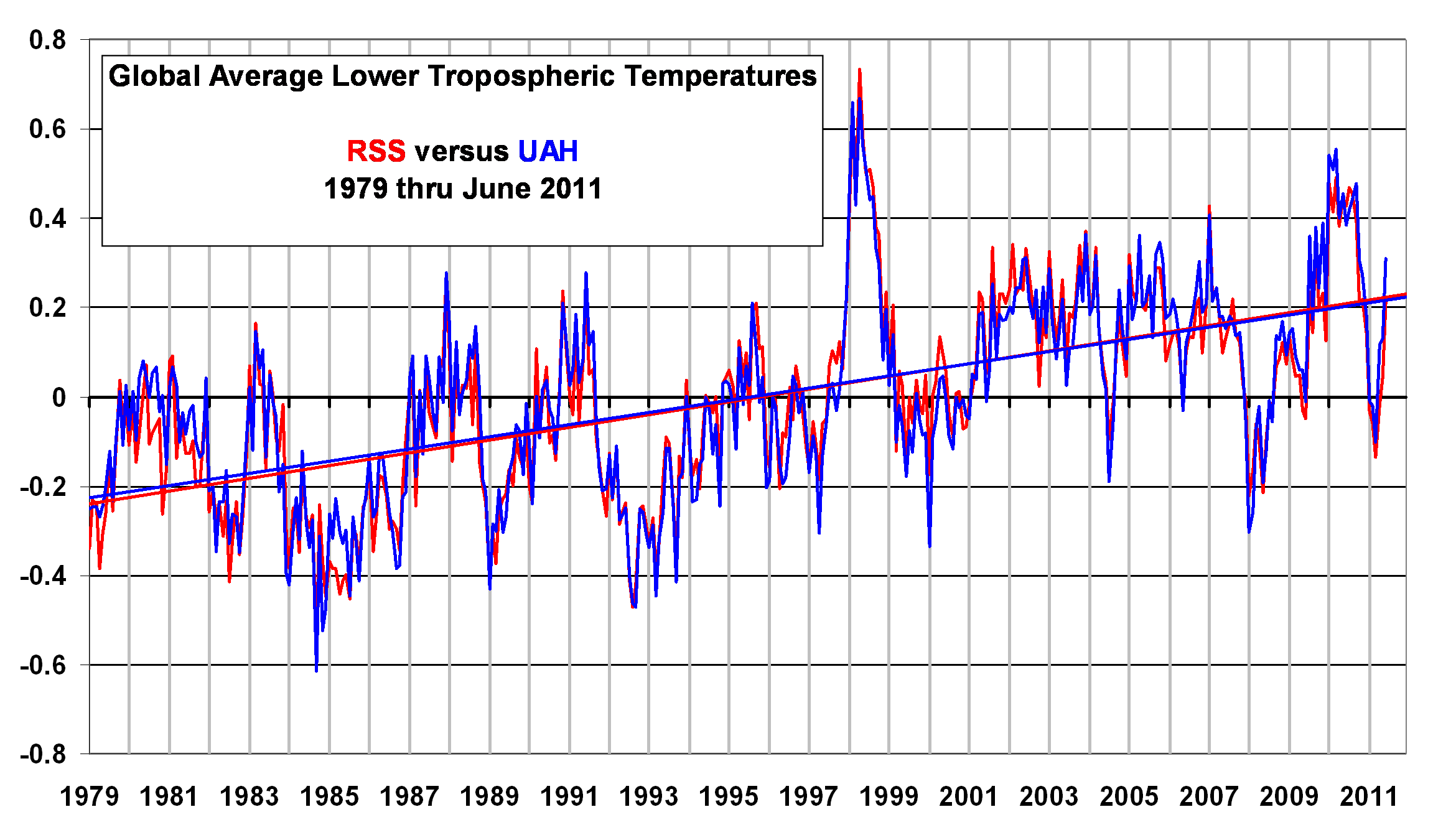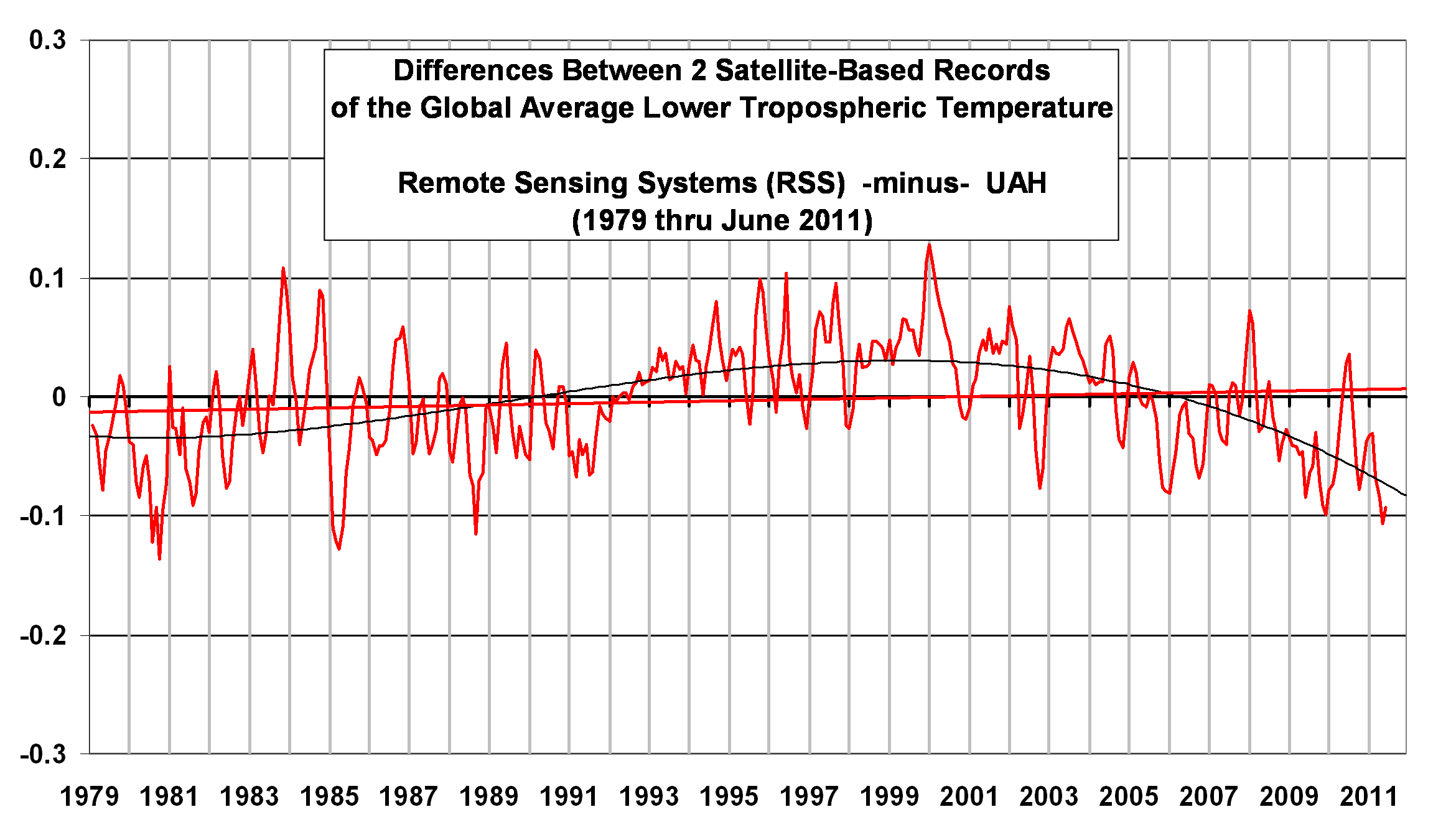…or, OMG! HAS UAH BEEN BOUGHT OFF BY GREENPEACE!?
Over the last ten years or so there has been a growing inconsistency between the UAH and Remote Sensing Systems versions of the global average lower tropospheric temperature anomalies. Since I sometimes get the question why there is this discrepancy, I decided it was time to address it.
If we look at the entire 30+ year record, we see that the UAH and RSS temperature variations look very similar, with a correlation coefficient of 0.963 and linear trends which are both about +0.14 deg. C per decade:

(In the above plot I have re-computed the RSS anomalies so they are relative to the 1981-2010 average annual cycle we use; this does not affect the trends…just makes it more of an apples-to-apples comparison).
But if we examine a time series of the DIFFERENCE between the two temperature records, we see some rather interesting structure:

(Note: I have applied a 3-month smoother to the data to reduce noise).
As can be seen, in the last 10 years or so the RSS temperatures have been cooling relative to the UAH temperatures (or UAH warming relative to RSS…same thing). The discrepancy is pretty substantial…since 1998, the divergence is over 50% of the long-term temperature trends seen in both datasets.
WHY THE DIVERGENCE?
So, why the discrepancy? Well, if it was OUR (UAH) data that was cooling relative to RSS, people would accuse us of being bought off by Exxon-Mobil (I wish!…still waiting for that check..). At least that has been the history of this debate.
But now WE are the ones with “excess” warming. So where are the accusations that RSS is being bought off by Big Oil?
Hmmmm?
(It’s OK, we are used to the hypocrisy. 🙂 )
Anyway, my UAH cohort and boss John Christy, who does the detailed matching between satellites, is pretty convinced that the RSS data is undergoing spurious cooling because RSS is still using the old NOAA-15 satellite which has a decaying orbit, to which they are then applying a diurnal cycle drift correction based upon a climate model, which does not quite match reality. We have not used NOAA-15 for trend information in years…we use the NASA Aqua AMSU, since that satellite carries extra fuel to maintain a precise orbit.
Of course, this explanation is just our speculation at this point, and more work would need to be done to determine whether this is the case. The RSS folks are our friends, and we both are interested in building the best possible datasets.
But, until the discrepancy is resolved to everyone’s satisfaction, those of you who REALLY REALLY need the global temperature record to show as little warming as possible might want to consider jumping ship, and switch from the UAH to RSS dataset.
It’s OK, we’ve developed thick skin over the years. 🙂 You can always come home later.
Gee, I wonder if some of all that green money will start flowing our way now? I’m not going to hold my breath.

 Home/Blog
Home/Blog



